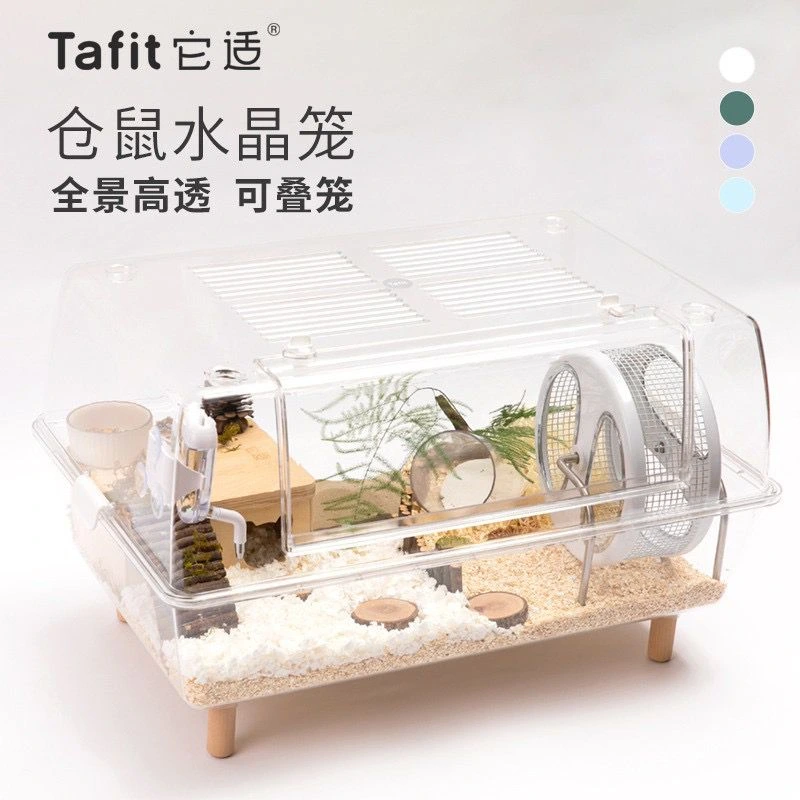Syrian hamsters are solitary and should be housed alone to avoid fighting and stress. Hamsters are very active animals, so don’t make the mistake of assuming that just because your pet is small it doesn’t need much room for exercise. A 60cm cage is the minimum requirement for a Syrian Hamster to keep your hamster active and happy. Our advice will be: try to get a bigger cage—when it comes to hamster cages, bigger is always better.
Syrian hamsters need ample space to run and play, and the actual floor space of the cage is important for this. In general, many cages marketed for hamsters are too small for Syrian hamsters. Note that the tubes, compartments, and built-in wheels of plastic modular cages are too small for many Syrian hamsters, as they are intended more for dwarf hamsters or mice.
Style of Cage
Your main choices will be between a wire cage (usually on a plastic base), an acrylic cage(can be transparent or with colors), or an aquarium. Each style of cage has advantages and disadvantages when it comes to cleaning, ventilation, and security.
As a general rule, wire cages are easy to clean, but if the bars aren’t spaced closely enough, make it easy for your pet to escape. Horizontal bars will allow some opportunity to climb. Acrylic cages are better for containing messes such as stray bedding, food, or waste, but don’t provide as much ventilation as a wire cage. Glass tanks come in a wide range of sizes, but are heavy, can be cold, and block air circulation.
On the other hand, acrylic & glass tanks are high enough to be able to provide deep bedding for burrowing.
In consideration of limited spaces in households nowadays, many brands have come out with cage designs that allow you to stack on each other. I would say this will be a savior for hamster lovers like us but have limited spaces in the house!





